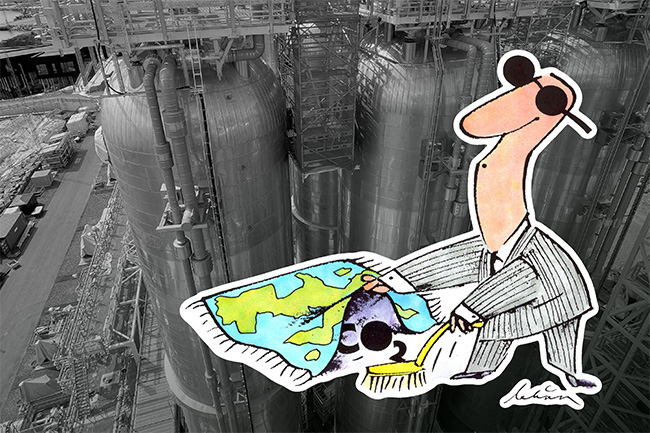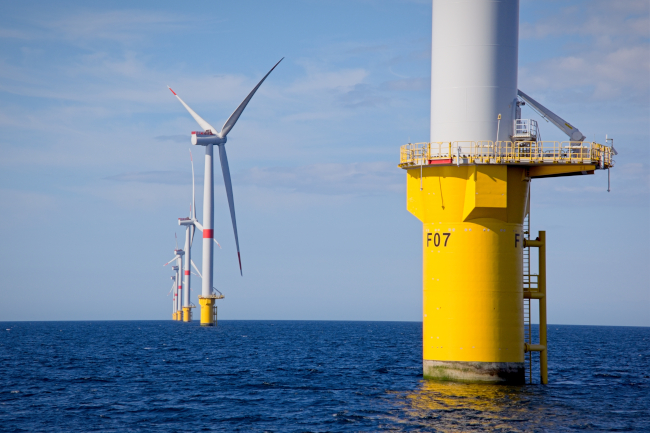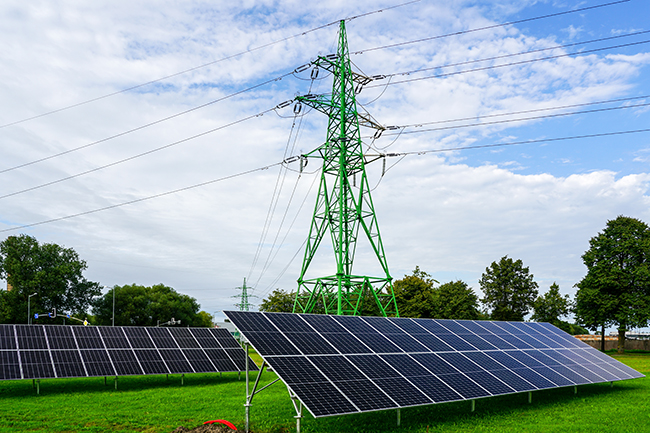No. 1 July 2025
Editorial: A New Chapter for Acid News
Since 1982, AirClim – a joint venture of four environmental organizations in Sweden – has received annual operational support from the Swedish Environmental Protection Agency. This funding has covered about half of our annual budget and been central to our work, enabling us to publish Acid News in print and to deliver independent, science-based reporting on acidification, air pollution, climate, energy, transport , agriculture and environmental policy.
Hard to abate industries?
There is a notion that there is a large group of emissions that are hard to abate, and therefore need either CCS on those emissions (effectively ‘turning the chimneys down’ into the underground) or negative emissions (to suck back CO2 from the atmosphere after it has been emitted). This notion has gone viral in the climate policy discussion. It is now the main justification for CCS.
NGO scenario shows how the EU and its 27 Member States can go net zero by 2040
Climate Action Network (CAN) Europe recently updated its Paris Agreement Compatible (PAC) scenario in which it describes how the European Union can become climate neutral by 2040, ten years earlier than the EU’s official target date.Freeing up the bottlenecks and accelerating offshore wind deployment
Offshore wind energy holds immense promise for meeting Europe’s renewable energy and climate goals. However, barriers such as stakeholder collaboration, grid infrastructure limitations, and slow permitting processes must be addressed to unlock the sector’s full potential.
Top EU industrial emitters: still dirty, but not so hard to abate
The 100 largest industrial emitters in the EU-27 are presented.
The climate benefit of Swedish forests can be improved
The most effective way to improve the climate benefit of Swedish forests is by harvesting less. This is a brief summary of the current state of knowledge.
With low-cost renewable electricity we can meet climate targets.
Falling costs for solar, wind, and batteries are making renewables the dominant force in electricity. With speed and scale, they can deliver the emissions cuts we need – if politics doesn’t get in the way.
Sink or Source - Northern forests at a cross-roads
Tropical forests get most of the attention, but northern forests are under growing threat too. A new report by AirClim explores the risks—and what can be done to protect them.
COP29 in Baku delivered controversial climate finance outcome
At the last climate summit (COP29) which took place in November 2024 in Baku, Azerbaijan, countries both welcomed and rejected the conclusions related to climate finance.
Carbon uptake by Swedish forests falls sharply
Sweden faces an uphill struggle to meet EU climate targets for its forests by 2030.

Air pollution down across EU, but ammonia remains a challenge
Emissions of key air pollutants continue to decline across most EU countries, according to a new assessment published by the European Environment Agency (EEA) on 27 June 2025.
“We don’t know where the tipping point is”
Climate expert on potential collapse of Atlantic circulation

Wind farms are not the main threat to birdlife
For many years now, the fossil fuel industry has supported claims that wind mills and wind farms are harmful to birds as they are often sited on important bird migration routes.

A fossil fuel economy requires 500 times more mining than a clean energy economy
The transition away from fossil fuels will increase the need for minerals such as copper, lithium, nickel and cobalt. Electric vehicle batteries, solar panels, transmission grids, etc. will all need these raw materials in amounts much bigger than today.

Mapping the world’s climate danger zones
Global emergence of regional heatwave hotspots outpaces climate model simulations.









